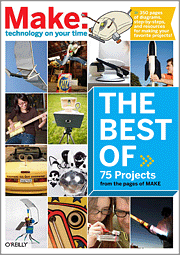This code snippet was adapted from one of Jim Wilson’s excellent “How Do I?” tutorials. It works with .NET Framework 2.0 (including the .NET Compact Framework CF 2.0 SP2), and I’ve successfully tested it on a Windows CE 4.2 device. You will probably want to add a bit more error handling:
///
/// Download a file from a URL to a local folder on a windows mobile device
/// Note: Don't forget that mobile folders do not start with a drive letter.
///
/// e.g. http://www.someaddress/downloads/
/// e.g. filetodownload.exe
/// e.g. \temp\
///
public static long FromHttp(string uri, string filename, string localFolder)
{
long totalBytesRead = 0;
const int blockSize = 4096;
Byte[] buffer = new Byte[blockSize];
if (!Directory.Exists(localFolder))
{
Directory.CreateDirectory(localFolder);
}
try
{
HttpWebRequest httpRequest =
(HttpWebRequest)WebRequest.Create(Path.Combine(uri, filename));
httpRequest.Method = "GET";
// if the URI doesn't exist, an exception will be thrown here...
using (HttpWebResponse httpResponse = (HttpWebResponse)httpRequest.GetResponse())
{
using (Stream responseStream = httpResponse.GetResponseStream())
{
using (FileStream localFileStream =
new FileStream(Path.Combine(localFolder, filename), FileMode.Create))
{
int bytesRead;
while ((bytesRead = responseStream.Read(buffer, 0, buffer.Length)) > 0)
{
totalBytesRead += bytesRead;
localFileStream.Write(buffer, 0, bytesRead);
}
}
}
}
}
catch (Exception ex)
{
// You might want to handle some specific errors : Just pass on up for now...
throw;
}
return totalBytesRead;
}
Comments welcome.
